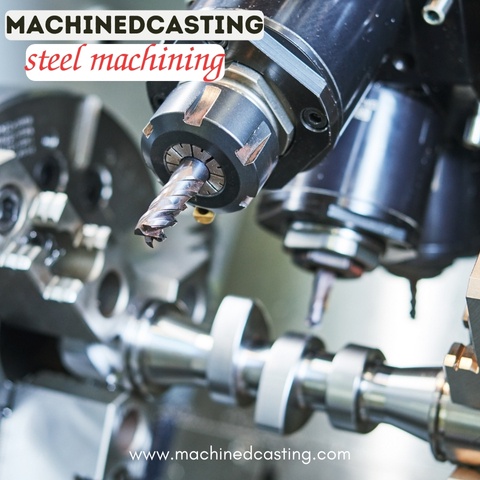Steel machining is a critical process in manufacturing industries, encompassing various techniques to shape, cut, and mold steel into desired forms. From automotive parts to aerospace components, steel machining plays a pivotal role in producing high-quality products. This guide aims to provide a comprehensive overview of steel machining techniques, tools, and best practices to achieve precision and efficiency in the manufacturing process.
-
Understanding Steel Properties: Before diving into machining techniques, it's crucial to understand the properties of steel. Steel is known for its durability, strength, and versatility, but its hardness and toughness can vary based on its composition and heat treatment. Different grades of steel require specific machining approaches, so familiarize yourself with the steel you're working with before starting the machining process.
-
Machining Techniques: a. Turning: Turning is one of the most common machining techniques for steel. It involves rotating a workpiece on a lathe while a cutting tool removes excess material to create cylindrical shapes, such as shafts, rods, and bushings. b. Milling: Milling utilizes rotary cutters to remove material from a workpiece, producing flat or contoured surfaces. With steel, milling is often used to create intricate shapes, slots, and pockets in components. c. Drilling: Drilling is the process of creating holes in steel using drill bits. Whether it's simple holes or precision bores, drilling is essential for various applications in steel machining. d. Grinding: Grinding is employed for achieving high precision and surface finish in steel components. It involves abrasive particles removing material from the workpiece, resulting in smooth surfaces and tight tolerances. e. EDM (Electrical Discharge Machining): EDM is suitable for machining hardened steel and intricate shapes that are challenging to achieve through conventional methods. It utilizes electrical discharges to erode material from the workpiece.
-
Tooling Selection: Choosing the right cutting tools is paramount for successful steel machining. Carbide inserts are commonly used for their hardness and wear resistance, ideal for cutting tough steel alloys. High-speed steel (HSS) tools are also effective for certain machining operations, offering good toughness and versatility.
-
Toolpath Optimization: Optimizing toolpaths can significantly improve machining efficiency and surface finish. Utilize CAM (Computer-Aided Manufacturing) software to generate optimized toolpaths based on factors like cutting forces, chip evacuation, and tool life. Efficient toolpaths reduce machining time and enhance overall productivity.
-
Cooling and Lubrication: Steel machining generates heat, which can accelerate tool wear and compromise surface quality. Implement effective cooling and lubrication systems to dissipate heat and lubricate cutting surfaces. Coolants and cutting fluids help improve chip evacuation, reduce friction, and prolong tool life.
-
Workholding: Securely holding the workpiece is crucial for precision machining. Choose appropriate workholding devices such as chucks, vises, or fixtures to ensure stability and accuracy during machining operations. Proper workpiece support minimizes vibration and enhances machining precision.
-
Quality Control: Regular quality control checks are essential to maintain machining accuracy and consistency. Utilize precision measurement tools like micrometers, calipers, and CMMs (Coordinate Measuring Machines) to verify dimensional accuracy and adherence to specifications.
-
Continuous Improvement: Embrace a culture of continuous improvement to refine machining processes and optimize productivity. Encourage feedback from operators and implement improvements based on lessons learned from previous machining projects.
In conclusion, mastering steel machining requires a combination of technical expertise, proper equipment, and attention to detail. By understanding steel properties, employing appropriate machining techniques, optimizing tooling and toolpaths, and prioritizing quality control, manufacturers can achieve superior results in steel machining, ensuring the production of high-quality steel components for diverse industrial applications.


No comments yet